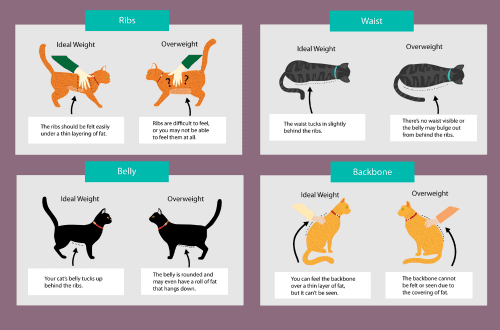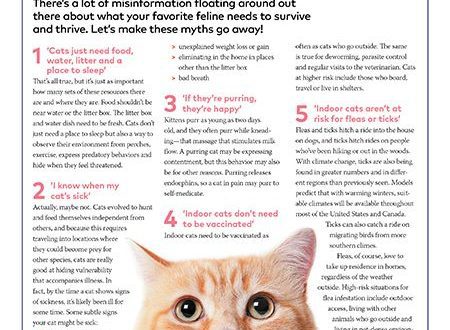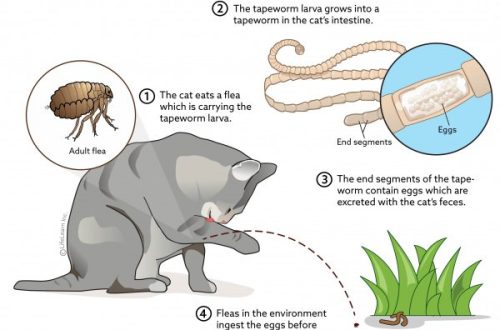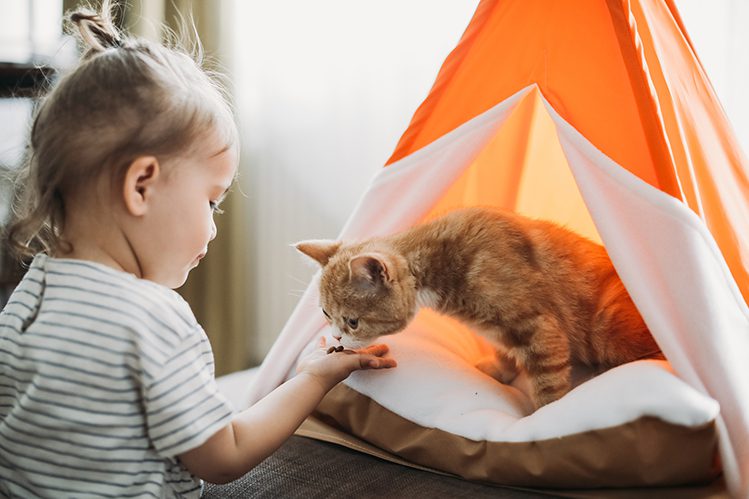
How to teach a child to play with a cat?
When a baby appears in the family, it changes the lives of not only parents, but also other family members – mustachioed, tailed and four-legged. Over time, the child begins to show an active interest in the cat, and the pet does not always reciprocate. The task of parents is to teach the child how to handle pets. Often, children play with cats in such a way that the unfortunate purrs are ready to hide in any gap away from the inquisitive child.
We will tell you how parents should behave so that neither the baby nor the pet suffers from joint games.
Contents
What should be remembered first of all?
If you are expecting a child and do not keep a cat at home yet, then it is better to wait 3+ years with the “mustachioed nanny”. It is difficult for a kid who does not understand speech to explain that it is impossible to pull out the hair from an animal and pull it by the ears. Small children play clumsily and may harm a living being. And the cat, in turn, will not endure the pain and strike back.
What if the cat was in your house long before the “arrival of the stork”?
Introducing a cat to a new family member
The relationship between a child and a pet largely depends on how their acquaintance goes. You need to be very careful: monitor the reaction of the baby and the cat, do not insist if one of them does not want to continue communication and do not leave the two of them unattended.
What else do you need to know?
It is important not only to protect the child from the cat, but vice versa. Small children often injure animals through negligence or because of the inability to handle a pet. Your task as a responsible parent is to teach the cat to communicate with the child, and the child to communicate with the cat.
Be prepared to repeat pet care information to your child several times. Repetition is the mother of learning, remember that. For maximum efficiency, use different formats: talk about care yourself, read specialized literature, watch educational videos, attend seminars. All this will bring you closer.
Be consistent. Once you have established your rules of conduct, follow them strictly, even on holidays. You can’t forbid a cat to sleep in a crib today, and start it “for a minute” tomorrow. So the cat will not understand what is required of it.
Do not push the cat away when she sniffs the things of the baby and himself out of curiosity. So the pet gets acquainted with the child and new smells for himself.
Do not forbid the animal to enter the newborn’s room, but only in your presence. The cat should not have free access to the territory of the baby.
- Of course, caring for a newborn will take a lot of time, but do not forget to pay attention to the cat in order to prevent jealousy and resentment on her part.

Making contact
A small person begins to be interested in animals at the same time when he tries to explore the world around him and crawl around the house, i.e. around 4-6 months old. A cat for children at this age does not act as a living being, but as another object that needs to be studied and felt. The kid is not yet able to assess the risks – and you have to do it for him. Even if you have the most calm, affectionate and kind cat, you must understand that she can behave unpredictably.
It is important that during the communication between the cat and the baby, one of the adults is always present nearby. In no case should you leave a cat and a child in the same room alone, because. this can be deplorable for each of them.
Watch animals carefully. If the cat looks worried or hostile, does not burn with the desire to communicate and play, it is better to leave it alone and take the baby to another room. Try to make contact later.
When a child grows up and begins to walk, his interest in the world around him and pets increases. Already from this period, it is necessary to instill in the child the rules of communication with a fragile but dangerous cat. At the same time, you need to take care of the safety of both the baby and the pet.
How to protect a child from a cat?
Every parent fears that a cat can scratch a child badly. Some decide to take extreme measures: they remove the claws of the pet through a special operation. But claws are the main defense of any cat, and removing them is a real barbarism. So you will make the cat disabled.
The best way out is proper upbringing and clipping of claws. As well as respecting the personal boundaries of the cat. It is important to explain to the child that the cat should not be disturbed when she is resting or showing that she does not want to communicate with anyone.
Sharp cat claws are not the only danger to a child. It is important to vaccinate the cat in time, treat it for parasites, keep its toilet clean, and undergo preventive examinations with a veterinarian.
Make sure that the child does not have access to the animal’s tray, does not treat himself from his bowl, does not lick the cat toys of their fluffy owner.
Pay attention to the stability of the scratching posts and the contents of the shelves in your apartment. Claws should not stagger, because they can fall at the most inopportune moment. And the cat should not be able to drop something heavy from a shelf or window sill directly onto the baby.
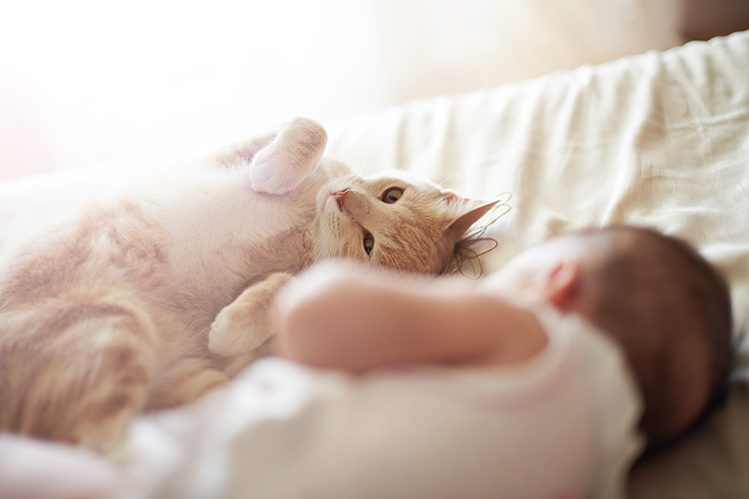
How to protect a cat?
Do not let the baby grab, squeeze, squeeze and pull the cat’s ears, whiskers and tail. Even if the pet does not break out and heroically holds on, this does not mean that he likes it. At such moments, the four-legged is under great stress and at any moment can protect itself with claws and teeth.
Show your child how to stroke a cat: smoothly, gently, according to the growth of the coat, from head to back. It is better not to touch the muzzle, ears, tail and paws, many cats do not like this.
Do not flatter yourself if the cat lies on its back. So he asks to scratch his belly! From this position, it is more convenient for a predator to attack a hand – to grab it with its paws and use its teeth.
If the child is already old enough, trust him with the simplest procedures for caring for a cat. For example, feeding or treating treats.
Let your little one imitate and learn how to play and behave properly with a furry family member. Inspire your child that a cat is a living creature that also feels pain, has its own desires and needs. Therefore, you can not tear the cat from food, wake it up, forcibly pull it out of the shelter. This will cause stress in the pet and provoke behavioral problems: fearfulness, aggression, lack of communication, and so on.
If a child grabbed a cat and she scratched him, in no case scold or beat her. Explain to the crying peanut that he, and not the cat, is to blame for this situation, because she was in pain, she tried to defend herself. The next time the baby will remember his bitter experience and will handle the animal more carefully and carefully.
What games can a child play with a cat?
The classic game with kittens is a butterfly on a string. Let the baby run around the house and pull a toy for which a predator will hunt. Such a toy is good because it can be built at home in just 5 minutes from a thread and paper or candy wrapper folded into an accordion.
The child will perfectly cope with mechanical toys that need to be wound up and lowered to the floor. The cat will eagerly chase after the mechanical mouse, and the kid will be delighted with this performance!
The laser pointer will also amuse both the child and the cat. For purrs and children, this will be not only fun, but also a safe pastime. During the game, the cat runs after the red dot. She does not contact the child and cannot accidentally scratch him. However, remember that at the end of the game it is important for the cat to catch the prey – this is the instinct of the hunter. Prepare a small toy for your baby so that at the end of the game he can give it to the cat and complete the game process.
A good solution would be toys with catnip. The plant contains essential oils that are pleasant to most cats. Mint relieves tension, calms, eliminates the consequences of stressful situations. Usually catnip is placed in special soft toys for cats.
Get a few teasers from the pet store with feathers, mice, bells and other attributes. The advantage of these toys is in the long handle that the child will hold on to. Even if the cat plays out and starts to actively wave its paws, it will not touch the baby with its claws.

Pay attention to the three-story track for cats with balls. This toy will not leave indifferent neither cats nor children, and several pets will be able to play it at once. Just make sure that two-legged and four-legged kids do not quarrel over balls!
Most often, children and cats themselves discover options for interesting games, give them the opportunity to experiment together. For example, children are very amused by how cats jump into boxes and hide there. Or as a pet with his mischievous paws, he destroys a turret of cubes, runs after the railway, serves as a transport for a platoon of soldiers (if the cat himself, of course, does not mind). Sometimes cats make wonderful “guests” who patiently sit at the same table with dolls, drinking invisible tea from elegant mini-cups.
Make sure that the cat does not lick or bite children’s toys, does not try the hair of dolls on the tooth, does not rip open soft toys and does not chew the filler from them. All this can end badly for a furry friend. Cat toys must be purchased from a pet store.
The games of children and cats look cute from the outside, but parents need to be on the lookout every minute. Do not let your child use their hands as pet toys. When a cat plays, she hunts. Even the calmest cat can get carried away and cling to the delicate baby skin with its claws. At any moment, something can go wrong.
How to improve the relationship between a child and a cat?
A few tips to help you get in touch:
Buy special treats for cats at the pet store and give them to your child – let him treat the pet from his hand. But keep in mind that you can’t feed a cat with “sweets”. Read the information on the package or consult with a specialist how much treats are best for your cat.
Show your child an example of how to treat a cat. Never raise your voice at her, do not beat, do not kick if she gets in the way under your feet. Also respect the personal space of the cat: she should have her own secluded place to hide or sleep. Ideally, if you equip a zone for a cat somewhere on a hill. Representatives of the cat family love to climb higher and enjoy solitude.
Do not force the child and the cat to play with each other. Most often, a cat resists communication – this is her right. Let her go about her business and come back when she wants to.
Give your pet enough attention. Cats are sensitive creatures. They may become jealous, resentful, run away from home, and even fall ill if they feel unwanted. The appearance of a child should not affect your relationship with your pet.
Do not move the bowls, tray or cat house to other places to place children’s things there. The cat is unlikely to understand this and may hold a grudge.
Do not support animal cruelty. There are a lot of videos on the Internet where the kid “funny” hugs the cat, and the cat with bulging eyes tries to escape under the laughter of adults behind the scenes. Don’t do it. This is not only not fun, but also inhumane in relation to a defenseless cat.

A pet and a child are a wonderful union! Numerous studies have proven its benefits. A person who has had animals since childhood learns compassion, responsibility and kindness. In addition, such children, according to statistics, are less susceptible to allergies.
We wish your children and pets the strongest, happiest friendship. Pets and kids are so cool!



